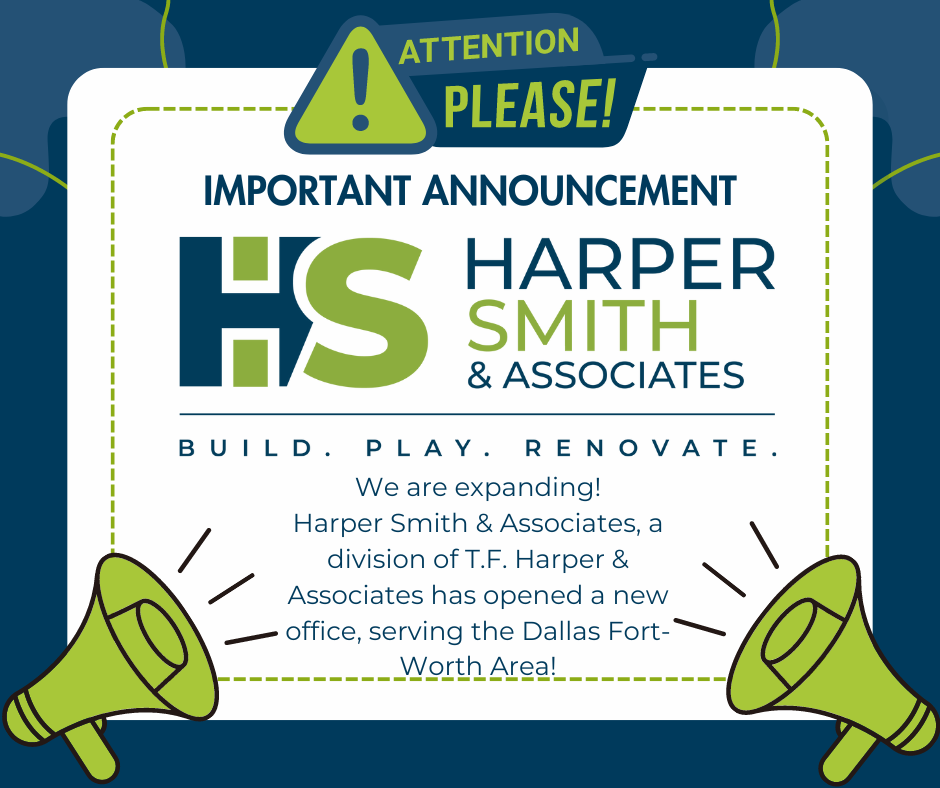The end of the fiscal year presents a familiar dilemma for facility managers and organizational leaders: the “use it or lose it” budget. You have allocated funds that need to be spent, but the clock is ticking. Initiating a traditional procurement process for a construction project at this point creates a problem. The bidding, selection, and negotiation cycle could extend into the new year, causing those valuable budget dollars to vanish.
This is precisely the scenario where a strategic partnership and a smarter contracting method make all the difference. Job Order Contracting (JOC) is a procurement vehicle designed for speed, efficiency, and partnership. It allows you to work with a pre-approved contractor (like TF Harper) using a book of pre-set prices. This eliminates the time-consuming bidding process, enabling you to scope, price, and start high-priority projects in a fraction of the time.
Instead of rushing to spend money on trivial items, you can use your remaining budget to complete meaningful upgrades that improve safety, boost morale, and enhance your facility’s value. Below, we have five smart facility upgrades perfectly suited for a year-end push with JOC.
Why Job Order Contracting Works for Year-End Projects
Traditional construction procurement involves lengthy processes: developing detailed specifications, public bidding periods, contractor selection, contract negotiations, and finally project start. This timeline often spans three to six months, which doesn’t work when you have eight weeks until budget expiration.
Job Order Contracting eliminates most of this timeline. The contract vehicle is already in place. Pricing is predetermined based on published unit price books. Scope can be defined and approved rapidly. Projects move from concept to construction in a fraction of the time traditional procurement requires.
For government entities and public institutions, JOC provides the compliance and transparency required while dramatically accelerating the process. You’re not cutting corners or avoiding proper procedures. You’re using a procurement method specifically designed for efficiency.
This makes JOC ideal for year-end scenarios where time matters, but you still need proper oversight, competitive pricing, and quality work. You can identify needed upgrades in November and have them substantially complete or well underway before the fiscal year closes.
Five Facility Upgrades Worth Prioritizing
1. Energy Efficiency and HVAC Improvements
HVAC upgrades deliver immediate operational savings that continue year after year. Replacing aging inefficient units, upgrading controls to programmable or smart thermostats, improving insulation, or sealing ductwork all reduce ongoing energy costs.
The return on investment timeline for energy upgrades is measured and predictable. You’re not just spending budget. You’re reducing next year’s operational expenses, which makes these projects easy to justify to stakeholders and budget authorities.
JOC works well for HVAC projects because the scope is typically straightforward, the work is well-defined in unit price books, and execution doesn’t usually require extended timelines. A contractor can often complete equipment replacements and control upgrades within a few weeks.
Calculate your current energy costs for the spaces being upgraded, get projections for post-upgrade costs, and document the expected payback period. This transforms a year-end budget spend into a strategic investment with measurable returns.
2. Safety and ADA Compliance Updates
Deferred safety improvements and accessibility compliance issues don’t go away. They accumulate until they create liability, fail inspections, or prevent facility use by segments of your population.
Year-end budgets offer opportunities to address these issues without competing against other priorities for funding. Installing proper handrails, upgrading emergency lighting, improving slip-resistant flooring, adding ADA-compliant door hardware, or updating restroom accessibility all fall into this category.
These projects are often relatively small in scope but high in importance. They’re perfect for JOC execution because they’re well-defined, don’t require extensive design work, and can be completed quickly.
Documenting these upgrades also demonstrates due diligence for compliance purposes. You’re proactively addressing known deficiencies rather than waiting for violations or incidents to force action.
3. Interior Refresh and Workspace Improvements
Worn, outdated, or poorly functioning interior spaces affect morale, productivity, and how the public perceives your organization. Fresh paint, updated flooring, improved lighting, and modernized common areas create immediate visible impact.
These improvements might seem cosmetic compared to mechanical or safety upgrades, but their effects on occupant satisfaction and organizational image are real. Public-facing spaces particularly benefit from updates that signal the organization is well-maintained and current.
JOC handles interior renovation work efficiently because scope is easily defined, materials and labor are straightforward to price, and work can often happen during off-hours or weekends to minimize disruption.
Focus interior upgrades on high-visibility, high-traffic areas where the improvement will be noticed and appreciated by the most people. Entry lobbies, common areas, public restrooms, and frequently used conference or meeting spaces deliver more value than back offices or storage areas.
4. Technology Infrastructure and Power Upgrades
Facilities built even 15 years ago weren’t designed for current technology loads. Insufficient power outlets, lack of charging stations, inadequate data infrastructure, and poor connectivity create ongoing frustrations and limit functionality.
Upgrading electrical capacity, adding power and data drops, installing charging stations, improving WiFi infrastructure, or updating communications systems addresses real operational needs that affect how people use the facility daily.
These projects integrate well with other upgrades. If you’re already doing interior work, adding electrical and data infrastructure at the same time is efficient. The marginal cost of adding technology improvements to a larger project is usually less than executing them separately later.
Technology infrastructure upgrades also position facilities for future needs rather than just addressing current deficiencies. You’re building capacity for evolution rather than just maintaining status quo.
5. Exterior Maintenance and Weatherproofing
Deferred exterior maintenance creates compounding problems. Small roof leaks become major water damage. Minor concrete cracks expand into safety hazards. Failing caulking and sealants allow water intrusion that damages interior spaces.
Year-end budgets can address these issues before they escalate. Roof repairs, concrete restoration, exterior painting, window and door sealing, parking lot maintenance, and drainage improvements all prevent larger future problems.
Timing matters for exterior work. Completing projects before winter weather sets in protects facilities through the harshest months and prevents seasonal deterioration. Starting work in November or early December for completion before major weather events is strategic.
JOC contractors can mobilize quickly for exterior maintenance projects, and the work is highly compatible with unit price book structures. Quantities are measurable, tasks are standard, and pricing is straightforward.
Executing Year-End Projects Successfully
Having budget and a JOC contract in place isn’t enough. Successful year-end project execution requires specific approaches.
Prioritize ruthlessly based on need and impact rather than just spending available funds. Every dollar of budget spent on lower-priority projects is a dollar unavailable for genuine needs. Be strategic even when facing time pressure.
Define scope clearly but avoid over-engineering. Year-end projects don’t need the same exhaustive specifications as major capital projects. Clearly communicate what you need, what standards apply, and what outcomes you expect without creating unnecessary complexity.
Engage your JOC contractor early in the planning process. Their experience with similar projects helps refine scope, identify potential issues, and develop realistic timelines. Early involvement prevents surprises that delay projects or inflate costs.
Accept that some projects may extend into the new fiscal year for completion as long as they’re obligated and started before year-end. The goal is committing budget appropriately, not necessarily finishing every project by December 31st.
Communicate with stakeholders about what’s happening and why. Year-end spending sometimes creates skepticism about whether it’s strategic or just budget-burning. Explaining the rationale and expected benefits builds support and prevents criticism.
Frequently Asked Questions About JOC
How quickly can Job Order Contracting projects start after approval?
JOC projects can often move from approval to construction start within two to four weeks, compared to three to six months for traditional procurement. The exact timeline depends on project complexity, contractor availability, and how quickly scope and pricing are finalized. For straightforward projects using a well-established JOC contract, some work can begin within days of final approval.
Is pricing through Job Order Contracting competitive even though it’s not traditionally bid?
Yes. JOC pricing is based on published unit price books that are competitively established during the initial contract procurement. The contractor’s coefficient (markup) was competitively bid when the JOC contract was awarded. While individual projects aren’t bid separately, the pricing structure is competitive and transparent. Most JOC contracts also include mechanisms for pricing negotiation and third-party cost validation.
What size projects work best for year-end JOC execution?
Projects in the $10,000 to $500,000 range are ideal for year-end JOC execution. Smaller projects may not justify the administrative effort, while very large projects may have complexities that prevent rapid execution. However, there’s flexibility based on specific circumstances. Simple large projects can work, and important small projects may be worth doing regardless of administrative efficiency.
Can we use JOC for projects that weren’t in our original facility plan?
Yes. One of JOC’s advantages is flexibility to address emerging needs, opportunities, or problems that weren’t anticipated during annual planning. As long as the work falls within the JOC contract’s scope (renovation, repair, alterations) and budget is available, you can execute projects that weren’t originally planned. This makes JOC particularly valuable for year-end situations where you’re identifying uses for unexpected budget availability.
What happens if projects aren’t complete before our fiscal year ends?
As long as projects are properly obligated (contracted and funded) before fiscal year-end, work can continue into the new fiscal year for completion. The key is ensuring contracts are executed and funds are committed before the deadline. Verify your specific organization’s policies on multi-year obligations and ensure you’re following proper procedures for projects that span fiscal years.
What if our project is slightly over our remaining budget?
This is a great opportunity for collaboration. With a JOC partner, you can engage in “scope validation.” We can work with you to adjust materials or the scope of the project (value engineering) to align the final cost with your available budget, so your funds are used effectively without being exceeded.
Making Year-End Budgets Work Strategically
The difference between strategic year-end spending and wasteful budget-burning comes down to thoughtful prioritization and efficient execution. Job Order Contracting provides the execution mechanism. Your facility knowledge and understanding of organizational needs provides the prioritization.
Don’t default to whatever’s easiest or fastest. Identify the upgrades that deliver genuine value: safety improvements that reduce liability, energy upgrades that cut operational costs, accessibility enhancements that serve your population better, or deferred maintenance that prevents bigger problems.
Use the streamlined JOC process to execute those strategic priorities quickly enough to meet year-end deadlines without sacrificing quality or compliance. The goal is spending budget wisely and efficiently, not just spending it.
Your unspent budget represents opportunity cost. Every dollar that expires unused is a dollar that could have improved your facility, served your occupants better, or reduced future costs. Make every cent count!












